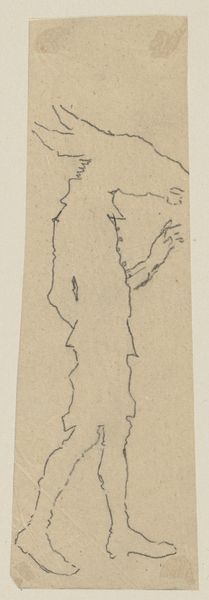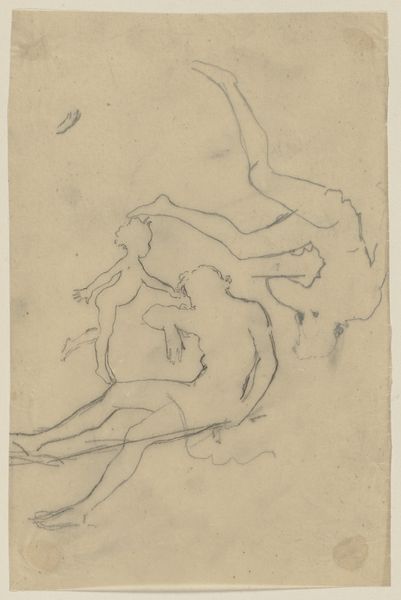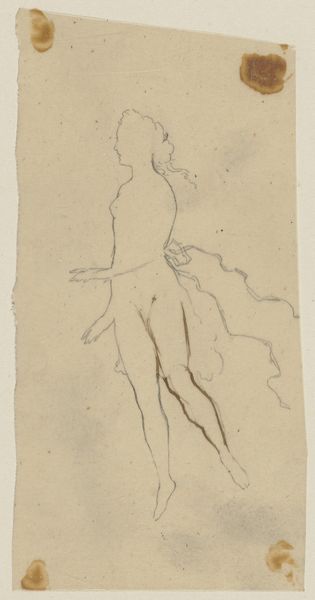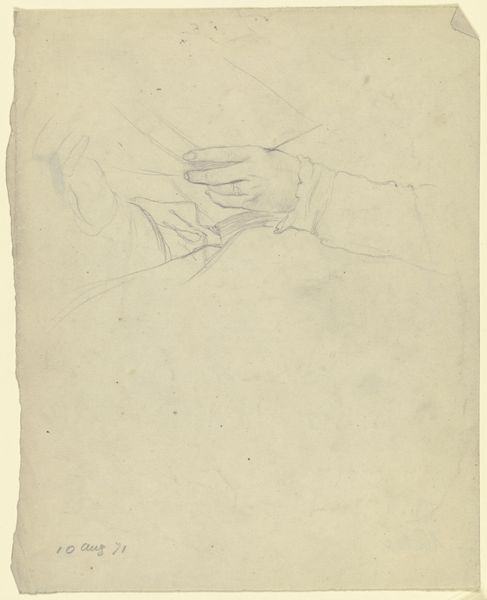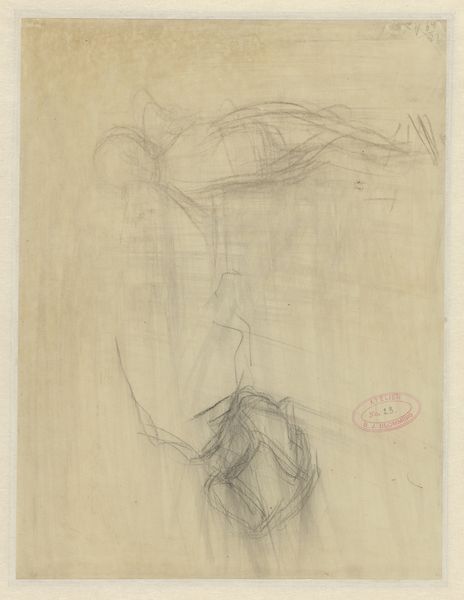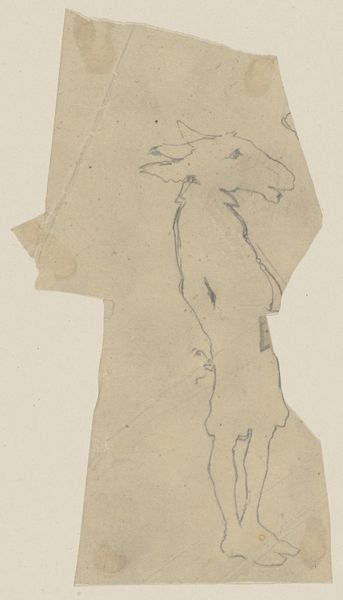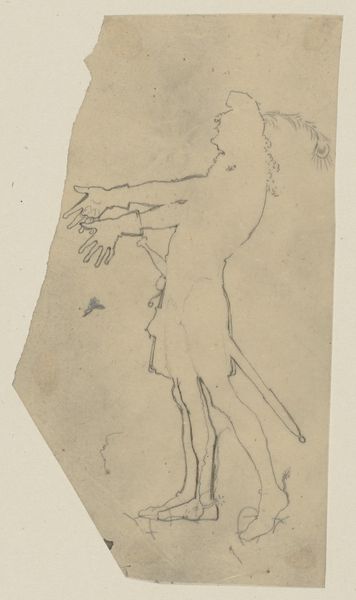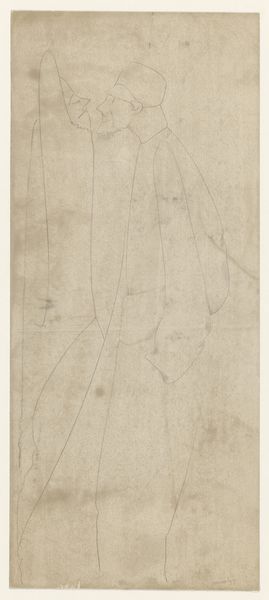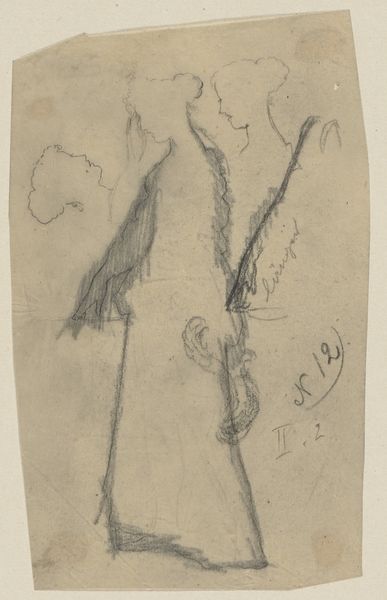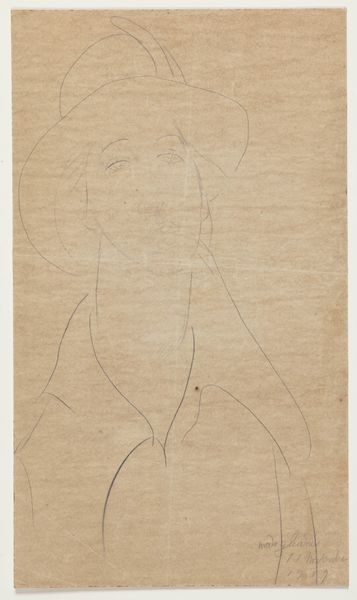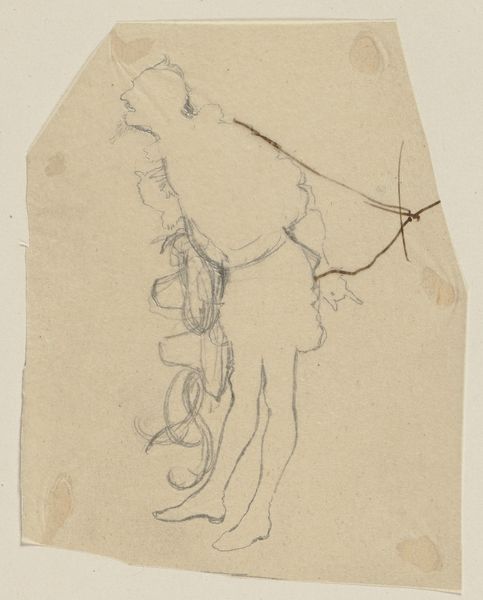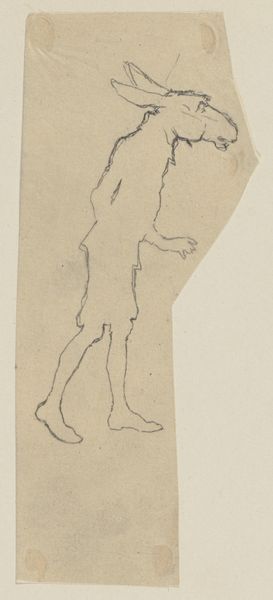
Copyright: Public Domain
Editor: So this is "Hermia, schreitend, nach links" by Paul Konewka, made around 1867 to 1868. It's a pencil drawing at the Städel Museum. It's a really simple figure, just an outline. What do you see in this piece? Curator: The primary observation lies in the economical use of line. Konewka masterfully employs line to denote form and movement, inviting us to consider the interplay between absence and presence within the pictorial space. Note how the subtle variations in line weight and density intimate a delicate spatial recession, a planar organization operating upon the page. Editor: So it's about the lines creating a sense of depth, even though it’s so minimal? Curator: Precisely. The function of the figure here resides within the semiotic implications of its visual components; that is to say, line, shape, and the white space become signifiers in and of themselves. Note the negative space: it defines the dress, lending it a billowing effect and implying movement, even life. How would you say the composition leads your eye through the piece? Editor: Well, I start at her face, then kind of follow the flow of her dress, the curve down to the bottom. It's like a gentle, flowing rhythm. Curator: An astute observation. This rhythmic visual trajectory establishes a structural framework by which we begin to interpret the figure's orientation within its environment. Further considerations regarding Konewka's application of formalism could involve scrutinizing the symbolic significance of the walking woman as it pertains to the social constructions of feminine identity in 19th-century Romanticism. Editor: That's fascinating! I hadn't considered that, I was just thinking about the pure form of the drawing itself. Now I see there is more going on there than I realized. Curator: Exactly. By recognizing the components of form, we open portals through which more expansive narratives are viewed.
Comments
No comments
Be the first to comment and join the conversation on the ultimate creative platform.

